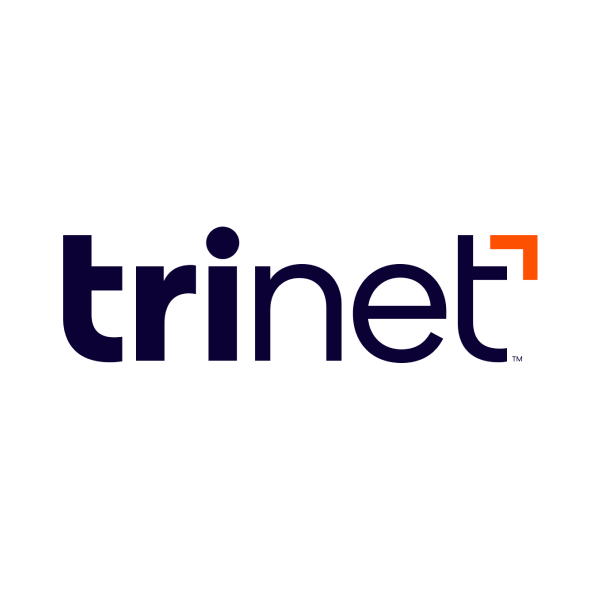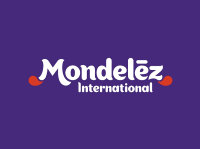
Adobe Inc
NASDAQ:ADBE


| US |

|
Johnson & Johnson
NYSE:JNJ
|
Pharmaceuticals
|
| US |

|
Berkshire Hathaway Inc
NYSE:BRK.A
|
Financial Services
|
| US |

|
Bank of America Corp
NYSE:BAC
|
Banking
|
| US |

|
Mastercard Inc
NYSE:MA
|
Technology
|
| US |

|
UnitedHealth Group Inc
NYSE:UNH
|
Health Care
|
| US |

|
Exxon Mobil Corp
NYSE:XOM
|
Energy
|
| US |

|
Pfizer Inc
NYSE:PFE
|
Pharmaceuticals
|
| US |

|
Palantir Technologies Inc
NYSE:PLTR
|
Technology
|
| US |

|
Nike Inc
NYSE:NKE
|
Textiles, Apparel & Luxury Goods
|
| US |

|
Visa Inc
NYSE:V
|
Technology
|
| CN |

|
Alibaba Group Holding Ltd
NYSE:BABA
|
Retail
|
| US |

|
JPMorgan Chase & Co
NYSE:JPM
|
Banking
|
| US |

|
Coca-Cola Co
NYSE:KO
|
Beverages
|
| US |

|
Walmart Inc
NYSE:WMT
|
Retail
|
| US |

|
Verizon Communications Inc
NYSE:VZ
|
Telecommunication
|
| US |

|
Chevron Corp
NYSE:CVX
|
Energy
|
Utilize notes to systematically review your investment decisions. By reflecting on past outcomes, you can discern effective strategies and identify those that underperformed. This continuous feedback loop enables you to adapt and refine your approach, optimizing for future success.
Each note serves as a learning point, offering insights into your decision-making processes. Over time, you'll accumulate a personalized database of knowledge, enhancing your ability to make informed decisions quickly and effectively.
With a comprehensive record of your investment history at your fingertips, you can compare current opportunities against past experiences. This not only bolsters your confidence but also ensures that each decision is grounded in a well-documented rationale.
Do you really want to delete this note?
This action cannot be undone.

| 52 Week Range |
312.4
552.96
|
| Price Target |
|
We'll email you a reminder when the closing price reaches USD.
Choose the stock you wish to monitor with a price alert.

|
Johnson & Johnson
NYSE:JNJ
|
US |

|
Berkshire Hathaway Inc
NYSE:BRK.A
|
US |

|
Bank of America Corp
NYSE:BAC
|
US |

|
Mastercard Inc
NYSE:MA
|
US |

|
UnitedHealth Group Inc
NYSE:UNH
|
US |

|
Exxon Mobil Corp
NYSE:XOM
|
US |

|
Pfizer Inc
NYSE:PFE
|
US |

|
Palantir Technologies Inc
NYSE:PLTR
|
US |

|
Nike Inc
NYSE:NKE
|
US |

|
Visa Inc
NYSE:V
|
US |

|
Alibaba Group Holding Ltd
NYSE:BABA
|
CN |

|
JPMorgan Chase & Co
NYSE:JPM
|
US |

|
Coca-Cola Co
NYSE:KO
|
US |

|
Walmart Inc
NYSE:WMT
|
US |

|
Verizon Communications Inc
NYSE:VZ
|
US |

|
Chevron Corp
NYSE:CVX
|
US |
This alert will be permanently deleted.
Adobe Inc





In the sprawling landscape of technology companies, Adobe Inc. stands out as a titan, a company that began its journey in a small Silicon Valley garage in 1982. Initially focused on revolutionizing desktop publishing, Adobe launched with its PostScript page description language, which became a pivotal tool for the printing industry. Fast forward to today, Adobe has transformed business sectors with its suite of design, marketing, and multimedia software. At the heart of its operations is the Creative Cloud platform, a once-groundbreaking shift from perpetual licensing to subscription-based models, which includes industry staples like Photoshop, Illustrator, and Premiere Pro. This model not only brings recurring revenue but also encourages user stickiness, as regular updates and cloud storage become integral to the creative ecosystem.
Adobe's prowess isn't confined to creativity alone; it extends to its Experience Cloud, a powerhouse of digital marketing solutions that capitalize on data analytics, customer intelligence, and automation to drive personalized marketing strategies for businesses worldwide. This arm harnesses Big Data, machine learning, and AI to offer insights that help companies transform customer engagement into actionable growth. Furthermore, Adobe's Document Cloud, featuring the ubiquitous Acrobat Reader and PDF services, caters to the growing demand for digital document management and e-signature solutions. The interplay of these platforms under Adobe's expansive umbrella not only unifies creative and business workflows but also creates a sustainable financial engine that capitalizes on the convergence of technology and creativity.

In the sprawling landscape of technology companies, Adobe Inc. stands out as a titan, a company that began its journey in a small Silicon Valley garage in 1982. Initially focused on revolutionizing desktop publishing, Adobe launched with its PostScript page description language, which became a pivotal tool for the printing industry. Fast forward to today, Adobe has transformed business sectors with its suite of design, marketing, and multimedia software. At the heart of its operations is the Creative Cloud platform, a once-groundbreaking shift from perpetual licensing to subscription-based models, which includes industry staples like Photoshop, Illustrator, and Premiere Pro. This model not only brings recurring revenue but also encourages user stickiness, as regular updates and cloud storage become integral to the creative ecosystem.
Adobe's prowess isn't confined to creativity alone; it extends to its Experience Cloud, a powerhouse of digital marketing solutions that capitalize on data analytics, customer intelligence, and automation to drive personalized marketing strategies for businesses worldwide. This arm harnesses Big Data, machine learning, and AI to offer insights that help companies transform customer engagement into actionable growth. Furthermore, Adobe's Document Cloud, featuring the ubiquitous Acrobat Reader and PDF services, caters to the growing demand for digital document management and e-signature solutions. The interplay of these platforms under Adobe's expansive umbrella not only unifies creative and business workflows but also creates a sustainable financial engine that capitalizes on the convergence of technology and creativity.
Record Revenue: Adobe reported record Q3 revenue of $5.99 billion, up 10% year-over-year and exceeding targets.
EPS Growth: GAAP EPS was $4.18, up 14% YoY, and non-GAAP EPS was $5.31, up 14% YoY; both metrics exceeded expectations.
AI-Driven Momentum: AI-influenced ARR surpassed $5 billion, and AI-first product ARR exceeded the $250 million full-year target a quarter early.
Guidance Raised: Management raised full-year FY '25 revenue and EPS guidance on strong business momentum.
Strong Product Adoption: Creative Cloud Pro, Firefly, Acrobat AI Assistant, and GenStudio saw robust adoption and customer engagement.
Enterprise & Consumer Growth: Both enterprise and consumer segments reported double-digit growth, with notable Digital Media ARR up 11.7% YoY.
Operational Efficiency: Margins remained strong despite increased AI investment, driven by productivity and disciplined cost management.
Retention & Safety: Increased AI adoption correlated with improved customer retention, and commercial safety of AI features was emphasized to address enterprise concerns.
Management

Shantanu Narayen is an accomplished business executive and the Chairman and Chief Executive Officer (CEO) of Adobe Inc. Born on May 27, 1962, in Hyderabad, India, Narayen pursued an undergraduate degree in electronics and communication engineering from Osmania University. He then earned an MBA from the University of California, Berkeley, and a master's degree in computer science from Bowling Green State University. Narayen began his career at Apple, where he gained foundational industry experience before moving on to Silicon Graphics, where he contributed significantly to desktop and collaboration products. In 1998, he co-founded a company called Pictra, focusing on digital photo sharing over the Internet. Narayen joined Adobe in 1998 as a senior vice president of worldwide product development. His strategic vision and leadership qualities quickly became apparent, leading to his promotion as the Chief Operating Officer (COO) in 2005. In 2007, he was appointed CEO. Under his leadership, Adobe successfully transitioned its business model from selling discreet software products to a subscription-based service with Adobe Creative Cloud, which significantly boosted the company's growth and positioned it as a leader in digital media and marketing solutions. Throughout his tenure, Narayen has been recognized for his ability to innovate and pivot Adobe's product offerings, ensuring the company remains at the forefront of a rapidly evolving technology landscape. He also serves on the board of Pfizer and has been listed multiple times on various influential business leader rankings. Overall, Shantanu Narayen's leadership at Adobe is characterized by a strong focus on innovation, customer-centric solutions, and strategic acquisitions that have expanded Adobe's product portfolio and market presence globally.

Narayen began his career at Apple, where he gained foundational industry experience before moving on to Silicon Graphics, where he contributed significantly to desktop and collaboration products. In 1998, he co-founded a company called Pictra, focusing on digital photo sharing over the Internet.
Narayen joined Adobe in 1998 as a senior vice president of worldwide product development. His strategic vision and leadership qualities quickly became apparent, leading to his promotion as the Chief Operating Officer (COO) in 2005. In 2007, he was appointed CEO. Under his leadership, Adobe successfully transitioned its business model from selling discreet software products to a subscription-based service with Adobe Creative Cloud, which significantly boosted the company's growth and positioned it as a leader in digital media and marketing solutions.
Throughout his tenure, Narayen has been recognized for his ability to innovate and pivot Adobe's product offerings, ensuring the company remains at the forefront of a rapidly evolving technology landscape. He also serves on the board of Pfizer and has been listed multiple times on various influential business leader rankings.
Overall, Shantanu Narayen's leadership at Adobe is characterized by a strong focus on innovation, customer-centric solutions, and strategic acquisitions that have expanded Adobe's product portfolio and market presence globally.

Daniel J. Durn serves as the Executive Vice President and Chief Financial Officer (CFO) of Adobe Inc. In his role, he is responsible for Adobe’s global finance functions, including financial operations, investor relations, procurement, and corporate strategy and development. Before joining Adobe, Durn was the CFO at Applied Materials, where he played a key role in driving strategic and financial initiatives. He also has extensive experience working in the finance sector with executive positions held at companies such as NXP Semiconductors and Freescale Semiconductor. Durn is known for his strong background in financial management and strategic planning, contributing significantly to Adobe's growth and performance. He holds an MBA from Columbia Business School and a bachelor’s degree in Business from San Diego State University.


David Wadhwani is a prominent technology executive currently serving as the President of Digital Media Business at Adobe Inc. In this role, he oversees the global strategy and execution for Adobe's Creative Cloud and Document Cloud product offerings, which include industry-standard software such as Adobe Photoshop, Illustrator, and Acrobat. His leadership is pivotal in driving Adobe's creative software subscription services and shaping the future of digital media and content creation. Wadhwani has a strong background in the software industry, having previously served in various leadership positions. Before rejoining Adobe, he was a general partner at Greylock Partners, a venture capital firm, where he focused on investing in enterprise software and services. Prior to that, he was the CEO of AppDynamics, a leading application performance management and IT operations analytics company, where he guided the company through a period of significant growth and eventually its acquisition by Cisco. This isn't Wadhwani's first tenure at Adobe; he initially joined Adobe through the company's acquisition of Macromedia in 2005, rising through the ranks to eventually lead Adobe’s digital media business. Wadhwani is known for his strategic vision, his ability to drive growth in software business segments, and his expertise in the intersection of technology and creativity. He holds a Bachelor’s degree in computer science from Brown University. Wadhwani's leadership and contributions to the tech industry are well-regarded, and his work continues to influence the evolution of digital creativity tools and platforms.

Wadhwani has a strong background in the software industry, having previously served in various leadership positions. Before rejoining Adobe, he was a general partner at Greylock Partners, a venture capital firm, where he focused on investing in enterprise software and services. Prior to that, he was the CEO of AppDynamics, a leading application performance management and IT operations analytics company, where he guided the company through a period of significant growth and eventually its acquisition by Cisco.
This isn't Wadhwani's first tenure at Adobe; he initially joined Adobe through the company's acquisition of Macromedia in 2005, rising through the ranks to eventually lead Adobe’s digital media business. Wadhwani is known for his strategic vision, his ability to drive growth in software business segments, and his expertise in the intersection of technology and creativity. He holds a Bachelor’s degree in computer science from Brown University.
Wadhwani's leadership and contributions to the tech industry are well-regarded, and his work continues to influence the evolution of digital creativity tools and platforms.

Scott K. Belsky is an entrepreneur, author, and executive known for his role as the Chief Product Officer and Executive Vice President at Adobe Inc. He has made significant contributions to the creative software industry, particularly through his efforts to enhance and expand Adobe’s suite of products. Belsky is also recognized for founding Behance in 2006, a platform designed to showcase and discover creative work. Under his leadership, Behance grew into the leading creative network used by millions of professionals worldwide, which Adobe later acquired in 2012. Throughout his career, Belsky has focused on fostering creativity and helping creative professionals connect and share their work. He has written several books on the subject, including "Making Ideas Happen," which explores how to navigate the challenges of implementing creative ideas. At Adobe, Belsky has been instrumental in advancing the development and adoption of creative cloud applications, emphasizing user experience and community engagement. His work continues to influence the way creative software evolves, ensuring it meets the changing needs of artists, designers, and creators globally.

Belsky is also recognized for founding Behance in 2006, a platform designed to showcase and discover creative work. Under his leadership, Behance grew into the leading creative network used by millions of professionals worldwide, which Adobe later acquired in 2012.
Throughout his career, Belsky has focused on fostering creativity and helping creative professionals connect and share their work. He has written several books on the subject, including "Making Ideas Happen," which explores how to navigate the challenges of implementing creative ideas.
At Adobe, Belsky has been instrumental in advancing the development and adoption of creative cloud applications, emphasizing user experience and community engagement. His work continues to influence the way creative software evolves, ensuring it meets the changing needs of artists, designers, and creators globally.

Dr. Anil S. Chakravarthy is known for his leadership role at Adobe Inc., where he serves as the Executive Vice President and General Manager of the Digital Experience business unit. He joined Adobe in 2020, bringing a wealth of experience in enterprise technology and data management. Before joining Adobe, Dr. Chakravarthy was the CEO of Informatica, a company specializing in enterprise cloud data management. During his tenure, he led the company through a major transformation and was instrumental in transitioning Informatica to a cloud-focused business model. Dr. Chakravarthy holds a Ph.D. in Operations Research and a Master of Science in Engineering from the Massachusetts Institute of Technology (MIT). His academic background complements his extensive experience in the industry, which includes notable roles at Symantec, where he worked on various products and solutions and helped drive strategic shifts in the company. At Adobe, Dr. Chakravarthy's focus is on expanding the Digital Experience business, which includes a suite of applications and services designed to help businesses enhance their customer experiences through digital means. His leadership is pivotal in driving innovation and growth across Adobe's offerings in digital marketing, analytics, and commerce.

Before joining Adobe, Dr. Chakravarthy was the CEO of Informatica, a company specializing in enterprise cloud data management. During his tenure, he led the company through a major transformation and was instrumental in transitioning Informatica to a cloud-focused business model.
Dr. Chakravarthy holds a Ph.D. in Operations Research and a Master of Science in Engineering from the Massachusetts Institute of Technology (MIT). His academic background complements his extensive experience in the industry, which includes notable roles at Symantec, where he worked on various products and solutions and helped drive strategic shifts in the company.
At Adobe, Dr. Chakravarthy's focus is on expanding the Digital Experience business, which includes a suite of applications and services designed to help businesses enhance their customer experiences through digital means. His leadership is pivotal in driving innovation and growth across Adobe's offerings in digital marketing, analytics, and commerce.

Cynthia A. Stoddard serves as the Senior Vice President and Chief Information Officer (CIO) at Adobe Inc. In her role, she oversees Adobe's global Information Technology and Cloud Operations teams. Stoddard is responsible for driving the company's IT strategy and ensuring that Adobe's technology infrastructure aligns with its overall business goals. She plays a crucial role in implementing innovative solutions and technologies that enhance efficiency, collaboration, and security across the organization. Before joining Adobe in 2016, Stoddard accumulated extensive experience in the IT field, holding several senior leadership positions. Her previous roles include serving as the Senior Vice President and Chief Information Officer at NetApp, where she led key projects to enhance business operations and IT capabilities. She has also worked at organizations such as Safeway Inc., where she was responsible for leading efforts in IT transformation and service management. Stoddard is highly regarded for her ability to integrate IT systems with business strategy, ensuring technology serves as a catalyst for growth and innovation. She is also recognized for her leadership in driving diversity and inclusion within the technology sector. Throughout her career, she has been an advocate for modernization and cloud technologies, supporting Adobe's transformation initiatives to deliver exceptional digital experiences. Her efforts have not only contributed to Adobe's operational success but have also earned her recognition in the industry as a leading CIO. Stoddard holds a Bachelor’s degree in Accounting from Western New England University and an MBA from Marylhurst University, highlighting her strong educational background that complements her professional achievements.

Before joining Adobe in 2016, Stoddard accumulated extensive experience in the IT field, holding several senior leadership positions. Her previous roles include serving as the Senior Vice President and Chief Information Officer at NetApp, where she led key projects to enhance business operations and IT capabilities. She has also worked at organizations such as Safeway Inc., where she was responsible for leading efforts in IT transformation and service management.
Stoddard is highly regarded for her ability to integrate IT systems with business strategy, ensuring technology serves as a catalyst for growth and innovation. She is also recognized for her leadership in driving diversity and inclusion within the technology sector. Throughout her career, she has been an advocate for modernization and cloud technologies, supporting Adobe's transformation initiatives to deliver exceptional digital experiences.
Her efforts have not only contributed to Adobe's operational success but have also earned her recognition in the industry as a leading CIO. Stoddard holds a Bachelor’s degree in Accounting from Western New England University and an MBA from Marylhurst University, highlighting her strong educational background that complements her professional achievements.

Dana Rao is the Executive Vice President, General Counsel, and Corporate Secretary at Adobe Inc. He leads the company's legal, security, and policy departments, playing a crucial role in ensuring compliance, strategic direction, and oversight of legal matters. Rao joined Adobe in 2012 and has since contributed significantly to the company's growth and innovation. Before joining Adobe, he spent 10 years at Microsoft, where he worked on various legal and policy issues. He holds a J.D. from Stanford Law School and a bachelor’s degree in electrical engineering from Villanova University. With his extensive experience and expertise, Rao is a key figure in guiding Adobe's corporate and legal strategies.


Gloria Chen is the Chief People Officer and Executive Vice President of Employee Experience at Adobe Inc. She plays a pivotal role in shaping the company's people and workplace strategies, which are critical components of Adobe's business success. With a focus on fostering a dynamic and inclusive work environment, she oversees various functions including talent acquisition, development, compensation, benefits, and workplace operations. Gloria Chen joined Adobe in 1997 and has held various positions across the company. Her extensive experience at Adobe spans several leadership roles, particularly in the strategic and operational aspects of the business. Before becoming the Chief People Officer, she served in positions that enabled her to closely work with Adobe’s senior leadership on key transformational initiatives, including business model transition and market expansion strategies. Chen is respected for her strategic acumen and her deep commitment to promoting a culture of innovation and inclusion. She holds a master's degree in electrical and computer engineering from Carnegie Mellon University and an MBA from Harvard Business School, underscoring her strong background in both technical and business disciplines. Through her leadership, Gloria Chen continues to be a crucial figure in Adobe's continuous growth and success by ensuring that the company's workforce remains engaged, motivated, and aligned with Adobe's core values and mission.

Gloria Chen joined Adobe in 1997 and has held various positions across the company. Her extensive experience at Adobe spans several leadership roles, particularly in the strategic and operational aspects of the business. Before becoming the Chief People Officer, she served in positions that enabled her to closely work with Adobe’s senior leadership on key transformational initiatives, including business model transition and market expansion strategies.
Chen is respected for her strategic acumen and her deep commitment to promoting a culture of innovation and inclusion. She holds a master's degree in electrical and computer engineering from Carnegie Mellon University and an MBA from Harvard Business School, underscoring her strong background in both technical and business disciplines.
Through her leadership, Gloria Chen continues to be a crucial figure in Adobe's continuous growth and success by ensuring that the company's workforce remains engaged, motivated, and aligned with Adobe's core values and mission.

Shanmugh Natarajan is a notable figure within Adobe Inc., where he has held prominent positions contributing to the company's technological advancements and management strategies. He served as the Managing Director and Vice President of Adobe's Operations in India, overseeing one of the company's largest R&D centers outside the United States. Natarajan played a crucial role in driving innovation and enhancing Adobe’s product portfolios, which include widely acclaimed software like Adobe Creative Cloud and Adobe Document Cloud. His leadership and strategic vision have significantly propelled Adobe’s growth and development in the digital experience space. His deep expertise in software development and product engineering has been instrumental in fostering a culture of innovation at Adobe's India operations.


Simon Dale is a distinguished executive at Adobe Inc., well-regarded for his strategic and operational expertise in the technology sector. He serves as Managing Director for Southeast Asia (SEA) and Korea, a role in which he is responsible for driving Adobe's growth and market presence across these regions. With over 30 years of experience in the tech industry, Simon has held pivotal roles, showcasing his leadership in business development, sales, and technology management. Before joining Adobe, Simon Dale held significant positions at various tech giants. His career includes impactful tenures at SAP, where he was involved in driving the company's cloud business expansion. His experience extends to leadership roles at technology leaders like Microsoft and IBM, where he developed a deep understanding of the enterprise software landscape. Simon is known for his commitment to innovation, digital transformation, and building high-performance teams. His professional journey reflects a blend of technical acumen and business strategy, focusing on leveraging technology to achieve business objectives. Simon Dale's leadership at Adobe is characterized by his efforts to foster customer success, enhance digital experiences, and support the creative and document cloud capabilities that Adobe is renowned for.

Before joining Adobe, Simon Dale held significant positions at various tech giants. His career includes impactful tenures at SAP, where he was involved in driving the company's cloud business expansion. His experience extends to leadership roles at technology leaders like Microsoft and IBM, where he developed a deep understanding of the enterprise software landscape.
Simon is known for his commitment to innovation, digital transformation, and building high-performance teams. His professional journey reflects a blend of technical acumen and business strategy, focusing on leveraging technology to achieve business objectives. Simon Dale's leadership at Adobe is characterized by his efforts to foster customer success, enhance digital experiences, and support the creative and document cloud capabilities that Adobe is renowned for.




















































